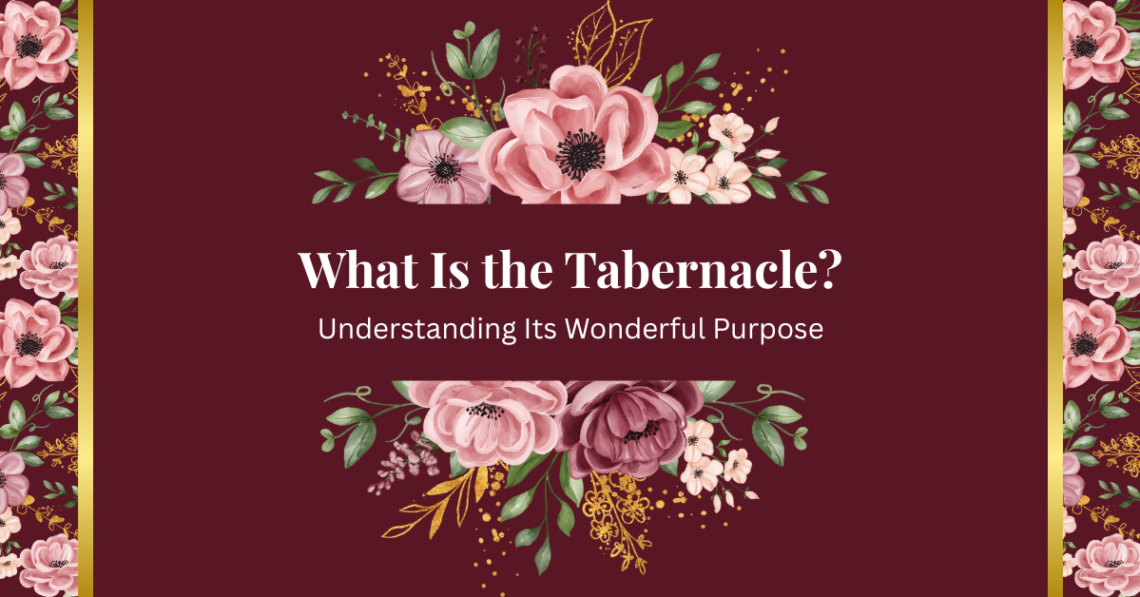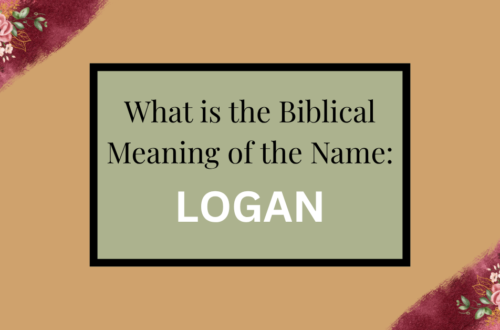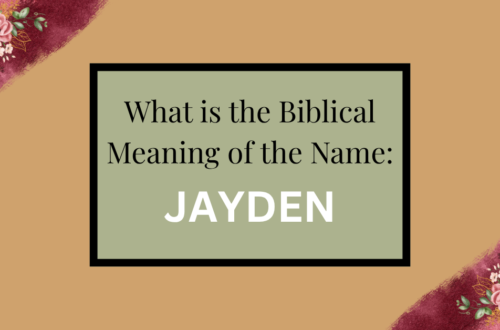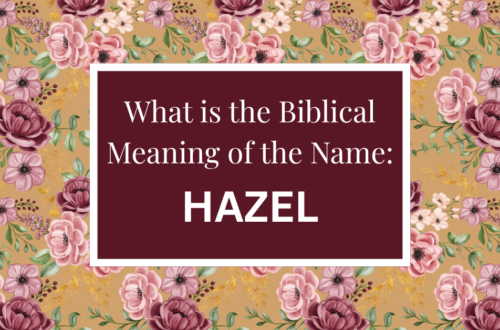If you’ve ever read through the book of Exodus, you’ve probably come across detailed instructions about something called the tabernacle. For many readers, these chapters can feel overwhelming or even confusing. What is the tabernacle, and why does it matter so much in Scripture? To answer this question, we need to look closely at the tabernacle’s design, its role in Israel’s worship, and how it points forward to Jesus Christ.
The tabernacle was far more than a tent in the wilderness. It was a holy place where God chose to dwell with His people. Understanding what the tabernacle is and why God commanded it to be built gives us incredible insight into God’s character, His holiness, and His desire for relationship with His people.
What Is the Tabernacle? A Simple Definition
The tabernacle was a portable sanctuary built by the Israelites during their journey through the wilderness. God gave Moses detailed instructions for its construction in Exodus 25–31, and the actual building process is recorded in Exodus 35–40.
In its simplest sense, the tabernacle was a tent where God’s presence dwelled among His people. But it wasn’t just any tent—it was designed according to God’s exact specifications and served as the central place of worship and sacrifice.
So, when asking “what is the tabernacle,” the answer is that it was the meeting place between God and Israel, a physical reminder that God was dwelling in the midst of His chosen people.
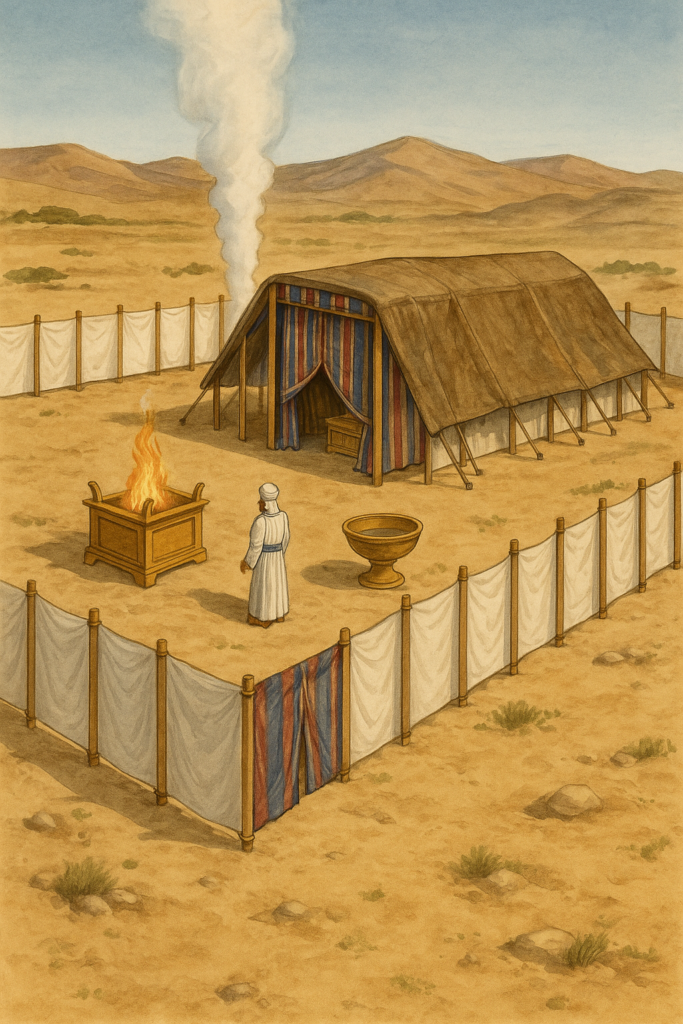
The Structure of the Tabernacle
The tabernacle was carefully designed with specific sections, each one pointing to different aspects of God’s holiness and His relationship with His people.
- The Outer Court – This was the first area people would encounter. It included the bronze altar, where sacrifices were made, and the bronze basin, where the priests washed before serving.
- The Holy Place – Inside the tent itself, this area contained the golden lampstand, the table of showbread, and the altar of incense. Only priests could enter this area, and it was a place of service and worship.
- The Most Holy Place (Holy of Holies) – The innermost part of the tabernacle, separated by a thick veil. This room housed the Ark of the Covenant, which represented God’s throne on earth. Only the high priest could enter here, and only once a year on the Day of Atonement.
Every part of the tabernacle was rich in symbolism, teaching Israel about God’s holiness, their sin, and His provision for forgiveness.
The Purpose of the Tabernacle
So, what is the tabernacle’s purpose? At its core, the tabernacle existed so that God could dwell among His people. In Exodus 25:8, God said, “They are to make a sanctuary for me so that I may dwell among them.”
The tabernacle served several purposes:
- A dwelling place for God – It reminded Israel that God was near.
- A place of sacrifice – Sin required atonement, and the sacrificial system took place here.
- A center of worship – Festivals, offerings, and daily worship all centered around the tabernacle.
- A teaching tool – Every detail pointed to God’s holiness and foreshadowed Christ.
The Symbolism of the Tabernacle
One of the most fascinating aspects of the tabernacle is how its design symbolized greater spiritual truths.
- The Bronze Altar – Represented the need for sacrifice to approach God.
- The Basin – Symbolized cleansing before entering God’s presence.
- The Lampstand – Pointed to God’s light guiding His people.
- The Showbread – Represented God’s provision and fellowship.
- The Altar of Incense – Symbolized the prayers of God’s people rising to Him.
- The Ark of the Covenant – Represented God’s throne, His covenant, and His presence.
The tabernacle was a visible, tangible way for Israel to understand who God is and what He required of His people.
God’s Presence in the Tabernacle
One of the most beautiful parts of the tabernacle story is how God’s presence filled it when it was completed. Exodus 40:34 says, “The cloud covered the tent of meeting, and the glory of the Lord filled the tabernacle.”
The tabernacle was not just symbolic—it was a real place where God’s glory dwelled among His people. The cloud by day and fire by night guided Israel, reminding them constantly of God’s nearness.
The Tabernacle and Jesus Christ
As with so many elements of the Old Testament, the tabernacle pointed forward to Jesus. In fact, understanding what the tabernacle is helps us better understand Christ’s role as our Savior.
- Jesus as God’s Dwelling Place – John 1:14 says, “The Word became flesh and dwelt among us.” The word “dwelt” literally means “tabernacled.” Jesus is God’s ultimate dwelling place with His people.
- Jesus as the Sacrifice – The altar of sacrifice pointed to the cross, where Jesus made the ultimate offering for sin.
- Jesus as the High Priest – Just as the high priest entered the Most Holy Place, Jesus entered heaven itself to intercede for us (Hebrews 9:11–12).
- Jesus as the Presence of God – The glory that filled the tabernacle now shines through Christ, who brings us into God’s presence.
The tabernacle was always meant to be temporary, a shadow of something greater. That greater reality is Jesus.
Why the Tabernacle Still Matters Today
You may be wondering, what is the tabernacle’s relevance today? After all, we no longer worship in tents or offer animal sacrifices. Yet the lessons of the tabernacle remain powerful for modern believers.
- It reminds us of God’s desire to be near His people.
- It teaches us about the seriousness of sin and the cost of forgiveness.
- It points us to the beauty and sufficiency of Jesus Christ.
- It encourages us to live holy lives, set apart for God.
Even though the physical tabernacle no longer stands, its truths still shape our faith and deepen our understanding of God’s plan.
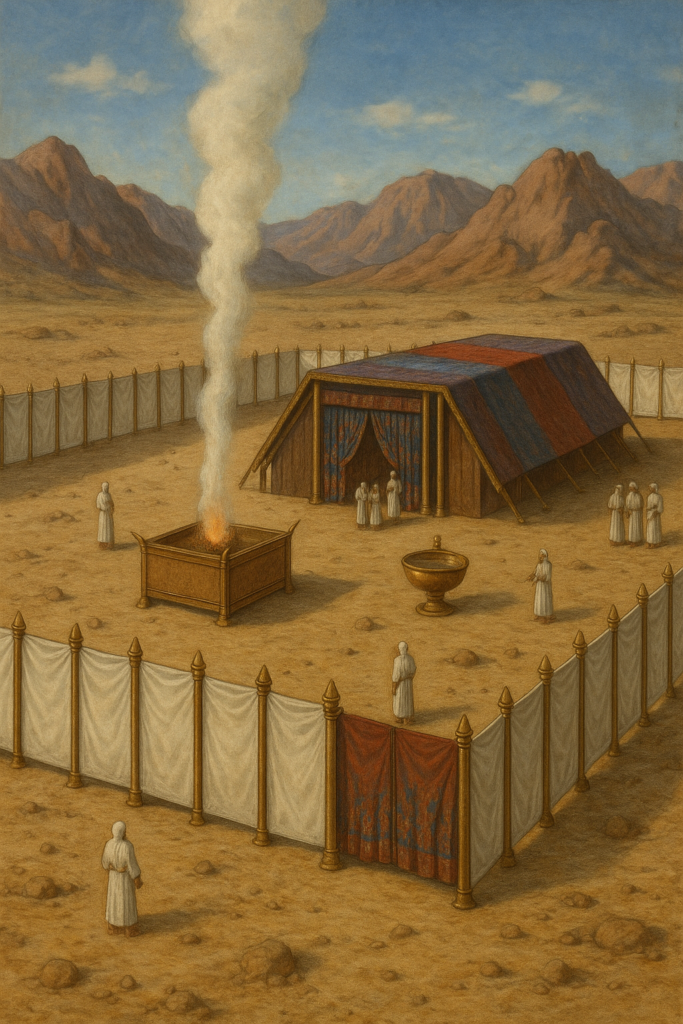
Practical Lessons from the Tabernacle
Here are a few practical ways we can apply the lessons of the tabernacle today:
- Value God’s Presence – Just as Israel saw God’s glory dwell in the tabernacle, we should cherish His presence through the Holy Spirit.
- Take Sin Seriously – The constant sacrifices of the tabernacle remind us that sin separates us from God. Thankfully, Jesus has already paid the price.
- Live in Holiness – The tabernacle’s careful structure shows us that God is holy and calls us to be holy in all we do.
- Draw Near to God – The tabernacle was God’s invitation to relationship. Through Christ, we are invited to draw near with confidence (Hebrews 4:16).
Conclusion
So, what is the tabernacle? It was the portable sanctuary of Israel, designed by God as a dwelling place for His presence, a center of worship, and a vivid teaching tool about His holiness and grace. While the tabernacle itself was temporary, its lessons are eternal. It pointed forward to Jesus Christ, the true dwelling place of God with us, the perfect sacrifice, and the one who brings us into God’s presence forever.
The next time you read about the tabernacle, don’t skim past the details. Instead, let them remind you of God’s holiness, His love, and His incredible plan of redemption through Jesus.
Now I’d love to hear from you: Before reading this, did you know what the tabernacle was? Which part of its symbolism stands out to you the most? Share your thoughts in the comments below so we can start a meaningful conversation together.
